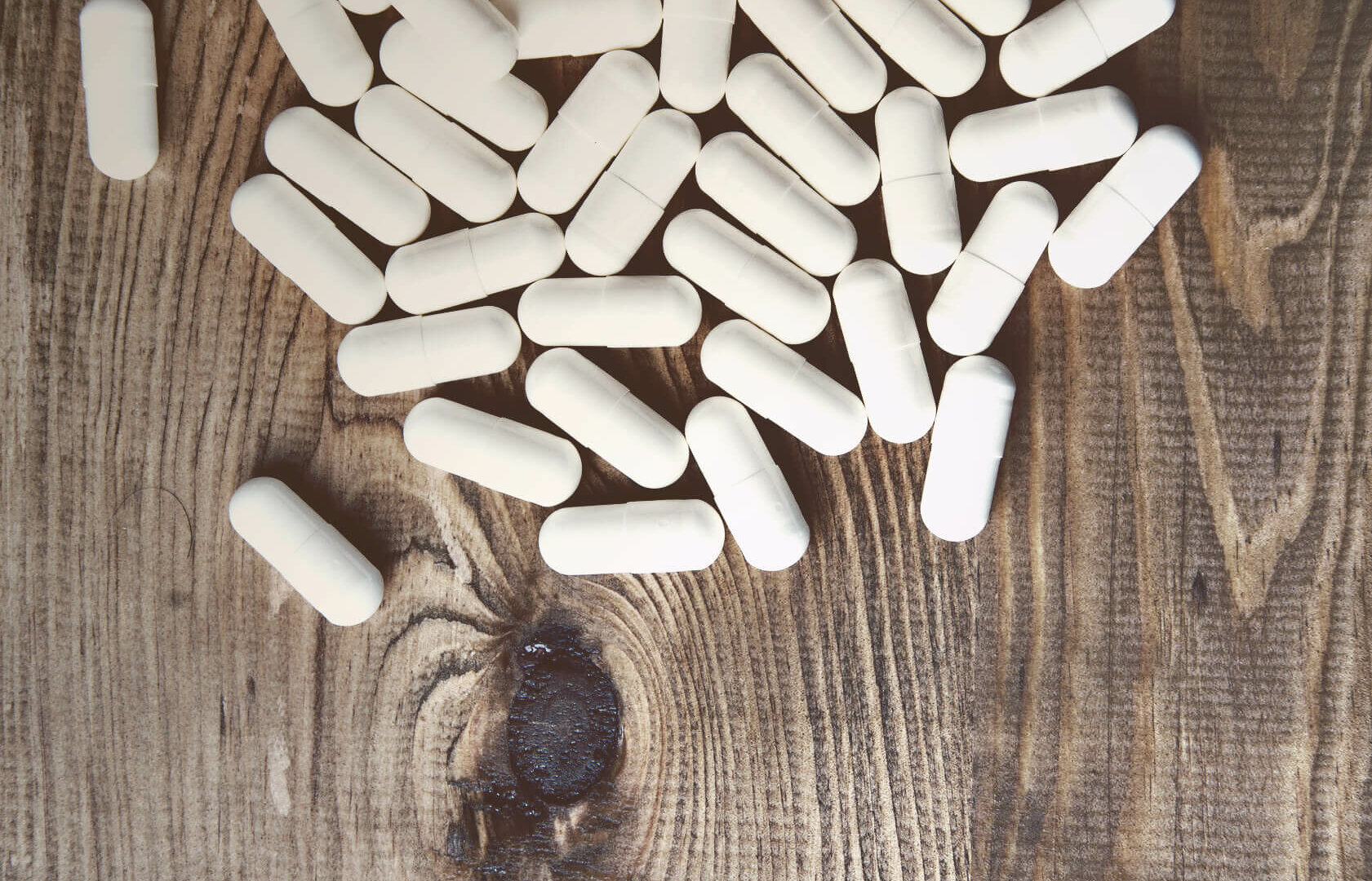Although creatine is one of the most well researched supplements, there are still many questions and doubts regarding its use and efficacy. Many types of creatine have been released throughout the years, each making similar promises: enhanced absorption, no water retention and fast muscle gain. This article will review what creatine is and discuss the top-selling types of creatine in order to determine which one you should be taking to maximize gains.
Creatine: What is it? How does it work?
ATP (Adenosine Tri-phosphate) is your body’s fuel source, driving almost every process in your body. It is made up of one adenosine molecule and three phosphate groups. When ATP is de-phosphorylated, meaning a phosphate group is removed, energy is released and used to drive cellular reactions that would be otherwise energetically unfavorable. After de-phosphorylation, the molecule now becomes ADP (Adenosine Di-phosphate); however, the energy released only provides a limited amount of energy at the site of muscular contraction in muscle tissue. The body must re-synthesize ATP from ADP to maintain this process. This means it must add a phosphate to the ADP molecule in order to produce ATP and release energy again.
When creatine enters muscle cells it will form creatine phosphate which is stored in your muscles. Creatine phosphate will donate its phosphate group to ADP, allowing it to re-form ATP, and therefore make ATP available for energy donation again. ATP can be re-synthesized without creatine phosphate. However, using creatine phosphate will provide a much faster way to do so and will provide greater stores of quick-release energy that your muscles can readily use throughout your workout.
Creatine and Performance
Creatine is likely the most well-researched bodybuilding supplement to date. In a review by Kreider, 300 studies involving creatine were examined. [1] Of these, 70% of studies showed benefits in high intensity exercise such as sprinting and weightlifting. None found a negative effect to creatine supplementation. The benefits included a 10-40% increase in phosphocreatine stores, a 5-15% increase in work capacity and maximum effort in power and strength and a 1-5% increase in sprint performance.
Does this mean that the more creatine, the better?
Contrary to initial logic, taking a massive amount of creatine does not lead to immense ATP storages that will provide you with energy to crush the most difficult of workouts! Your muscle cells have a limit to how much creatine they will uptake. [2] Once they are saturated with creatine, taking even more creatine supplements will not make a difference.
Types of Creatine
Different types of creatine are continuously being released, each claiming to have better absorption, no water retention, and extra anabolic benefits, all the things that athletes like to hear about. But is this just marketing? Here at BioLayne, we don’t take bro-science. We look at the real science behind such claims.
Creatine Monohydrate
Creatine Monohydrate (CM) was the first form of creatine made available. It is also the most popular and most cost-effective creatine derivative on the market. It is simply a creatine molecule bound to a water molecule.
Creatine is likely the most well-researched bodybuilding supplement to date and creatine monohydrate is the most studied form of creatine. In a review by Rawson et al., 22 studies involving resistance training and creatine monohydrate supplementation were reviewed. The review showed creatine monohydrate supplementation and resistance training caused an 8% greater increase in muscle strength compared to training alone. Further, creatine monohydrate supplementation combined with resistance training caused a 14% greater increase in weightlifting performance compared to groups ingesting a placebo plus performing resistance training. Specifically, an increase from 3-45% was observed in bench press 1RM. [3] Creatine monohydrate has stood the test of time, consistently showing benefits in performance throughout the years.
One of the greatest claims supplement companies have made against creatine monohydrate is that it has low bio-availability and must be consumed with simple carbohydrates in order to be absorbed properly. There is no evidence to support these claims, in fact, literature has shown that creatine monohydrate is almost 100% bioavailable. [4][5]
Will Creatine Monohydrate Cause Water Retention?
Creatine has been shown to hydrate the muscle cells, causing them to swell as their volume increases. Muscle cell swelling has been shown to activate MAPK class proteins, which increase protein synthesis and may contribute to the hypertrophic effects of creatine. [6][7] In plain English: the hydration of muscle cells due to creatine may be advantageous to muscle growth. If a company claims that their creatine does not “retain water”, they are essentially claiming that their creatine does not cause one of the best effects of creatine. Further, CM will increase intra-cellular water (water within the cell), this will cause your muscles to look “full” – a desirable effect.
Creatine Ethyl Ester
Creatine Ethyl Ester (CEE) is creatine monohydrate with an ester attached. The ester bond is thought to allow creatine to bypass the creatine transporter, allowing it to enter the cell intact and causing greater creatine uptake by the muscle. However, a study by Spillane et al. showed that creatine monohydrate increases muscle creatine levels more than creatine ethyl ester. [8] It was also shown the CM is significantly more effective at increasing intra-cellular water while CEE increases more extra-cellular water. Extra-cellular water is water outside the cell, which causes you to look “soggy”. As per the last point above, increasing intra-cellular muscle hydration is one of the most advantageous effects of creatine. Yet, it is lacking in CEE. Finally, CEE has been shown to increase serum creatinine levels, a metabolic by-product of creatine phosphate. [9]
To put it simply: creatine ethyl ester has inferior uptake, it causes extra-cellular hydration instead of intra-cellular hydration and forms greater amounts of creatinine.
Creatine Hydrochloride
Creatine hydrochloride (HCL) is a form of creatine in which the creatine molecule is bound to a hydrochloric acid. This form of creatine is marketed because it is x50 more soluble in water compared to creatine monohydrate. It is claimed that the greater solubility means that it has greater absorptions and requires less creatine to saturate the muscle cells. [10][11] However, there is no evidence showing that this increases creatine concentration in muscle cells. We must note that even though creatine HCl is more soluble in plain water, this says nothing about how digestible and absorbable a form of creatine may be. Further, creatine monohydrate has already shown to be 100% bioavailable, which means that even if creatine HCl is more soluble, it still cannot be more bioavailable to the body since it cannot surpass 100% bioavailability.
Buffered Creatine (Kre-Alkalyn)
Buffered Creatine is advertised as the only type of creatine with a pH above 12. It is claimed that this forms a more stable molecule that enters the muscle cell in its entirety and does not lead to the formation of creatinine, which increases bioavailability and makes it superior to creatine monohydrate. [12] Creatine monohydrate and Kre-Alkalyn were compared in a double-blind placebo study with 32 resistance-trained individuals. Both groups increased muscle creatine, fat-free mass and strength with no significant difference between the two groups. [13] However, serum creatinine levels were higher in the Kre-Alkalyn group. This means that Buffered Creatine is not superior to creatine monohydrate, it just has a bigger price tag.
The Bottom Line
Creatine monohydrate comes out on top every time. It is one of the most well-researched supplements out there and it has stood the test of time. It has been shown to be 100% bio-available and saturates muscle cells. In the best case scenario, other forms of creatine may be able to match the benefits of creatine monohydrate but for a much greater price.
Do yourself a favour and do not fall victim to marketing techniques. As they say, “if it ain’t broke, don’t fix it!”. Stick with creatine monohydrate, your gains and wallet will thank you!
References
- Kreider RB. Effects of creatine supplementation on performance and training adaptations. Mol Cell Biochem. 2003 Feb;244(1-2):89-94. [PMED]
- Mesa JL, Ruiz JR, González-Gross MM, Gutiérrez Sáinz A, Castillo Garzón MJ. Oral creatine supplementation and skeletal muscle metabolism in physical exercise. Sports Med. 2002;32(14):903-44. [PMED]
- Rawson ES, Volek JS. Effects of creatine supplementation and resistance training on muscle strength and weightlifting performance. J Strength Cond Res. 2003 Nov;17(4):822-31. [PMED]
- Deldicque L, Décombaz J, Zbinden Foncea H, Vuichoud J, Poortmans JR, Francaux M. Kinetics of creatine ingested as a food ingredient. Eur J Appl Physiol. 2008 Jan;102(2):133-43 [PMED]
- Chanutin A. The Fate of Creatine When Administered to Man. J. Biol. Chem. 1926 67: 29 [JBC]
- Tilly BC, Gaestel M, Engel K, Edixhoven MJ, de Jonge HR. Hypo-osmotic cell swelling activates the p38 MAP kinase signalling cascade. FEBS Lett. 1996 Oct 21;395(2-3):133-6. [PMED]
- Roux PP, Blenis J.ERK and p38 MAPK-Activated Protein Kinases: a Family of Protein Kinases with Diverse Biological Functions. Microbiol Mol Biol Rev. 2004 Jun; 68(2): 320–344. [PMED]
- Spillane M, Schoch R, Cooke M, Harvey T, Greenwood M, Kreider R, Willoughby DS. The effects of creatine ethyl ester supplementation combined with heavy resistance training on body composition, muscle performance, and serum and muscle creatine levels. J Int Soc Sports Nutr. 2009 Feb 19;6:6 [PMED]
- Velema MS, de Ronde W. Elevated plasma creatinine due to creatine ethyl ester use. Neth J Med. 2011 Feb;69(2):79-81. [PMED]
- Allmax Nutrition. Creatine Hydrochloride. http://www.allmaxnutrition.com/products-type/creatine-hcl/
- SD Pharmaceuticals. Creatine Hydrochloride. http://sdpharmaceuticals.com/products/muscle-growth-strength/creatine-hcl/
- Kre-Alkalyn. http://getkrealkalyn.com/
- Jagim AR, Oliver JM, Sanchez A, Galvan E, Fluckey J, Riechman S, Greenwood M, Kelly K, Meininger C, Rasmussen C, Kreider RB. A buffered form of creatine does not promote greater changes in muscle creatine content, body composition, or training adaptations than creatine monohydrate. J Int Soc Sports Nutr. 2012; 9: 43 [PMED]

